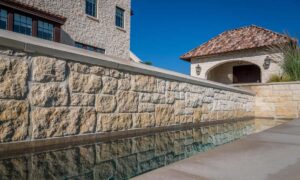Introduction
Maintaining and protecting surfaces such as wood, concrete, paver, and stone is essential to preserving their beauty, functionality, and longevity. While professional services are often recommended for complex projects, many surface protection and maintenance tasks can be effectively performed as DIY projects. This comprehensive guide provides step-by-step instructions for protecting and maintaining various surfaces, including recommended products and tools, common mistakes to avoid, and long-term maintenance tips. By following these DIY tips, you can save money, extend the lifespan of your surfaces, and keep them looking their best.
DIY Surface Protection for Wood
Wood surfaces, whether used for furniture, decks, or flooring, require regular care to prevent damage from moisture, UV rays, and wear. Here’s how to protect and maintain wood surfaces:
- Cleaning and Preparation:
-
-
- Dusting: Regularly dust wood surfaces to prevent dirt and grime buildup.
- Deep Cleaning: Use a mild, wood-specific cleaner and a soft cloth to clean the surface. For outdoor wood, a pressure washer on a low setting can be used, but avoid high pressure which can damage the wood fibers.
- Sanding: Lightly sand the surface with fine-grit sandpaper to remove any rough spots or old finish. Wipe off the dust with a damp cloth.
-
- Applying Protection:
-
-
- Sealant Application: Choose an appropriate wood sealer based on the type of wood and its exposure to the elements. Options include:
- Oil-Based Sealers: Provide deep penetration and natural finish. Examples include linseed oil and tung oil.
- Water-Based Sealers: These dry quickly and offer good protection against moisture and UV rays.
- Varnish or Polyurethane: Provides a hard, protective layer that is durable and resistant to scratches.
- Application Tips: Apply the sealer with a brush or cloth, following the wood grain. Allow it to penetrate the wood, and wipe off any excess. Apply multiple coats as recommended by the manufacturer, allowing adequate drying time between coats.
- Sealant Application: Choose an appropriate wood sealer based on the type of wood and its exposure to the elements. Options include:
-
- Maintenance:
-
- Regular Cleaning: Dust and clean the wood surface regularly to maintain its appearance.
- Reapplication: Reapply the protective finish every 1-3 years, depending on the wood type and exposure.
DIY Surface Protection for Concrete
Concrete surfaces such as driveways, patios, and floors are durable but still require protection from water, stains, and wear. Here’s how to protect and maintain concrete surfaces:
- Cleaning and Preparation:
-
-
- Sweeping: Regularly sweep concrete surfaces to remove dirt, leaves, and debris.
- Pressure Washing: Use a pressure washer to clean the surface thoroughly. For tough stains, use a concrete cleaner or degreaser.
- Crack Repair: Fill any cracks or holes with a concrete patching compound. Smooth the surface with a trowel and allow it to dry completely.
-
- Applying Protection:
-
-
- Sealer Application: Select a suitable concrete sealer based on the surface use and exposure. Options include:
- Acrylic Sealers: Provide a protective layer against water, UV rays, and stains. Suitable for both indoor and outdoor use.
- Epoxy Sealers: Offer superior durability and chemical resistance, ideal for garage floors and high-traffic areas.
- Penetrating Sealers: These sealers penetrate the concrete, providing long-lasting protection without altering the appearance.
- Application Tips: Apply the sealer with a roller or sprayer, ensuring even coverage. Apply multiple coats if recommended, allowing sufficient drying time between coats.
- Sealer Application: Select a suitable concrete sealer based on the surface use and exposure. Options include:
-
- Maintenance:
-
- Regular Cleaning: Sweep and wash the concrete surface regularly to keep it clean.
- Resealing: Reapply the sealer every 2-3 years to maintain optimal protection.
Concrete sealing services are crucial for enhancing the durability and appearance of your concrete surfaces, providing a robust shield against stains, cracks, and weather damage. By opting for professional concrete sealing services, you ensure your concrete remains in excellent condition, extending its lifespan and maintaining its aesthetic appeal.
DIY Surface Protection for Paver and Stone
Paver and stone surfaces, used in driveways, walkways, and patios, add aesthetic appeal and functionality but require regular maintenance to prevent damage. Here’s how to protect and maintain paver and stone surfaces:
- Cleaning and Preparation:
-
-
- Sweeping: Regularly sweep paver and stone surfaces to remove dirt and debris.
- Washing: Use a garden hose or pressure washer to clean the surface. For stains, use a pH-neutral cleaner specifically designed for paver and stone.
- Weed Removal: Remove any weeds growing between pavers. Use a weed killer if necessary.
-
- Applying Protection:
-
-
- Sealer Application: Choose a sealer that enhances the natural look of the pavers or stone and provides protection against moisture and stains. Options include:
- Penetrating Sealers: These sealers penetrate deep into the paver or stone, offering long-lasting protection without changing the surface appearance.
- Film-Forming Sealers: Create a protective layer on the surface, providing enhanced resistance to stains and wear. These may add a slight sheen to the surface.
- Application Tips: Apply the sealer with a sprayer or roller, ensuring even coverage. Apply a second coat if recommended, allowing adequate drying time between coats.
- Sealer Application: Choose a sealer that enhances the natural look of the pavers or stone and provides protection against moisture and stains. Options include:
-
- Maintenance:
-
- Regular Cleaning: Sweep and wash the paver and stone surfaces regularly.
- Joint Sand Maintenance: Inspect the joints between pavers and replenish the joint sand as needed to stabilize the pavers and prevent weed growth.
- Resealing: Reapply the sealer every 2-3 years to maintain optimal protection.
Common Mistakes to Avoid
When performing DIY surface protection and maintenance, it’s important to avoid common mistakes that can compromise the effectiveness of the protection. Here are some key mistakes to avoid:
- Inadequate Surface Preparation:
-
-
- Skipping Cleaning: Failing to clean the surface thoroughly can prevent sealers and finishes from adhering properly.
- Ignoring Repairs: Applying protection over cracks and holes without repairing them can lead to further damage and reduced effectiveness.
-
- Using Incorrect Products:
-
-
- Wrong Sealer Type: Using a sealer not suitable for the specific surface can lead to poor protection and potential damage.
- Harmful Cleaners: Using harsh chemicals can damage the surface and strip away protective coatings.
-
- Improper Application:
-
-
- Uneven Application: Applying the sealer or finish unevenly can lead to patchy protection and inconsistent appearance.
- Over-Application: Applying too much product can create a thick, unattractive layer that may not cure properly.
-
- Neglecting Maintenance:
-
- Skipping Regular Cleaning: Failing to clean the surface regularly can lead to the buildup of dirt, stains, and biological growth.
- Delaying Resealing: Waiting too long to reapply protective coatings can leave surfaces vulnerable to damage.
Long-Term Maintenance Tips
Consistent maintenance is crucial to ensure the long-lasting protection of surfaces. Here are some essential tips for long-term maintenance:
- Regular Inspections:
-
-
- Frequency: Inspect surfaces regularly for signs of wear, damage, or degradation.
- Action: Address any issues promptly to prevent further deterioration.
-
- Routine Cleaning:
-
-
- Dusting and Sweeping: Regularly dust and sweep surfaces to remove dirt and debris.
- Deep Cleaning: Use appropriate cleaning products and methods for thorough cleaning sessions, depending on the surface type.
-
- Protecting Against Physical Damage:
-
-
- Furniture Pads: Use protective pads under furniture legs to prevent scratches on wood and concrete surfaces.
- Avoid Heavy Impact: Be cautious when moving heavy objects across paver and stone surfaces to avoid cracking and chipping.
-
- Reapplying Protection:
-
-
- Frequency: Follow the manufacturer’s recommendations for reapplication intervals to maintain optimal protection.
- Seasonal Maintenance: Perform maintenance tasks at the start and end of each season to prepare surfaces for changing weather conditions.
-
- Controlling Environmental Factors:
-
-
- Humidity Control: Maintain stable indoor humidity levels to prevent wood from swelling or shrinking.
- Shade Structures: Consider adding shade structures or awnings to protect outdoor surfaces from direct sunlight.
-
- Using Eco-Friendly Products:
-
- Benefits: Eco-friendly products are safer for the environment and often provide effective protection without harmful chemicals.
- Options: Look for eco-friendly cleaners, sealers, and maintenance products that are specifically formulated for your surface type.
Conclusion
Protecting and maintaining surfaces such as wood, concrete, paver, and stone is essential to preserving their beauty, functionality, and longevity. While professional services are beneficial for complex projects, many surface protection and maintenance tasks can be effectively performed as DIY projects. By following the DIY tips outlined in this guide, you can save money, extend the lifespan of your surfaces, and keep them looking their best.
From cleaning and preparation to applying protection and regular maintenance, each step is crucial for ensuring long-lasting durability. Avoiding common mistakes and implementing consistent maintenance routines will help you achieve optimal results and enjoy the benefits of well-protected surfaces.
Whether you are caring for indoor furniture, outdoor decks, driveways, or patios, the principles and tips outlined in this guide will help you achieve the longest-lasting protection possible. With the right approach, you can preserve the natural beauty of wood, concrete, paver, and stone surfaces and safeguard your investment for years to come.
Read More From Techbullion And Businesnewswire.com



































